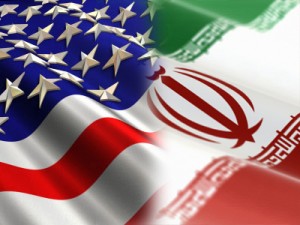 The “impulse to walk away from the [talks with Iran] is understandable”, writes Mary Kaszynski, a nuclear policy analyst at the American Security Project, but “negotiating with Iran is the only way to achieve a lasting solution to the nuclear dilemma.” Kaszynski, who published an informative overview of U.S.-Iran nuclear negotiations in July, also makes a poignant observation about the rhetoric surrounding the “military option” with Iran in The Diplomat:
The “impulse to walk away from the [talks with Iran] is understandable”, writes Mary Kaszynski, a nuclear policy analyst at the American Security Project, but “negotiating with Iran is the only way to achieve a lasting solution to the nuclear dilemma.” Kaszynski, who published an informative overview of U.S.-Iran nuclear negotiations in July, also makes a poignant observation about the rhetoric surrounding the “military option” with Iran in The Diplomat:
The lack of substantive progress hasledsome pundits and policymakers to call the negotiations a failure and urge the Obama administration to abandon them altogether. Instead, these critics advocate more aggressive actions to prevent Iran from obtaining a nuclear weapons capability, which range from enacting harsher sanctions to conductingmilitarystrikes against Tehran’s nuclear facilities.
The impulse to walk away from the talks is understandable. Diplomacy takes time and years of negotiations can sometimes produce only incremental progress. This process is painstakingly slow and inherently frustrating. The results of using armed force, on the other hand, are apparent much more quickly. As Council on Foreign Relations fellow MicahZenko,putsit, “[Both politicians and ordinary people] want to ‘do something.’ And nothing ‘does something’ like military force.”
The Washington Post’s blogger Jennifer Rubin is an example of an impatient pundit who opines from a prominent platform. Earlier this week she repeated her hope for the U.S. to increase its military threat to Iran because, in her mind, that will provide Iranians with an “incentive” to acquiesce to Western demands:
That “room for diplomacy to work” is precisely what keeps the Iranians from capitulating. It is only when we stop negotiations and begin, very overtly, preparations for military action that we can test whether Iran’s leaders, out of a desire for self-preservation, will come running, finally willing to make a deal.
But according to Kaszynski, with “both sides bolsteringtheirmilitarycapabilities in the region, the possibility of events escalating out of control rises considerably”:
Indeed, this has been demonstrated numerous times throughout the U.S.-Iranian rivalry. For example, with both sides on edge at the end of the Tanker War in 1988, the U.S. Navy shotdown an Iranian civilian aircraft that it mistakenly identified as an F-14 fighter jet. All 290 passengers on board perished.
More recently, last month a U.S. Navy vessel in the Gulf fired on a small Indian fishing boat, killing one and wounding three others. It was only hours later that Washington learned that the fishermen were Indian. Had they been Iranian, the story may have playedoutvery differently. With tensions at a fever pitch, an incident like this could easily be the catalyst that sets the U.S. and Iran on a path to the conflict neither side seeks.
Rubin is not shy with her opinions. Just consider her unabashed campaigning for Republican presidential candidate, Mitt Romney. Considering how she writes about the U.S.’s Iran policy on a regular basis, I welcome her thoughts about the possible dire consequences of halting negotiations with Iran while upping the military threat.





Why won’t any reporters ask Obama or Netenyahu about the radioactive contamination caused by bunker busters? Millions in Iran, India, Pakistan and Afghanistan will end up with cancer — and the Pentagon’s own studies confirm this.